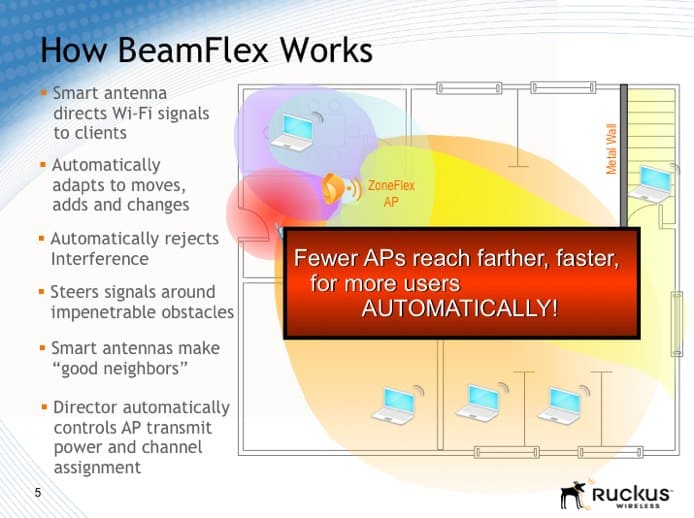
Today’s guest blog is by Greg Kamer, systems engineer for wireless equipment manufacturer Ruckus Wireless.
When it comes to comparing the feature sets of wireless hardware, beamforming is likely to come up. While most wireless networking hardware vendors claim that their products do beamforming, there are two different types and it does actually make a difference.
Transmit Beamforming (TxBF)
In this type of beamforming, the access point’s antennas stagger their signal transmissions based on their location and distance from the station (or receiving device). The goal of this is to achieve constructive interference with the signal’s radio waves. In other words, the waves need to line up and move in tandem in order to amplify the signal.
However, there’s a fundamental flaw with this. The laws of physics limit where in relation to the AP and its antennas a station will be actually receive that amplified signal. So, just because an access point boasts transmit beamforming, users probably aren’t benefiting from it unless they’re standing in the exact right spot to achieve that constructive interference (when the two different signal waves line up exactly).
There’s also a dirty little secret when it comes to transmit beamforming: many devices aren’t even capable of providing the necessary feedback for the AP to adjust its signal transmissions. In other words, the transmit beamforming feature that comes in most APs is rather useless.
Dynamic Beamforming (BeamFlex)
Ruckus Wireless has developed BeamFlex, which is a much more efficient use of signal. A Ruckus Wireless access point will direct the signal where it needs to go using proprietary algorithms and custom-built antennas that sense the location of the station. That’s the key difference between the two types of beamforming. Dynamic beamforming actually works because the access point will have antenna stations on all four sides in order to judge the strength of the station’s acknowledgement (and subsequently, its location). From there, it can direct the signal to the station.
There’s a bonus! With BeamFlex, both multiple-in, multiple-out (MIMO) and TxBF clients can benefit. In other words, BeamFlex is a much more advanced method to optimize signal for all devices accessing a wireless network.